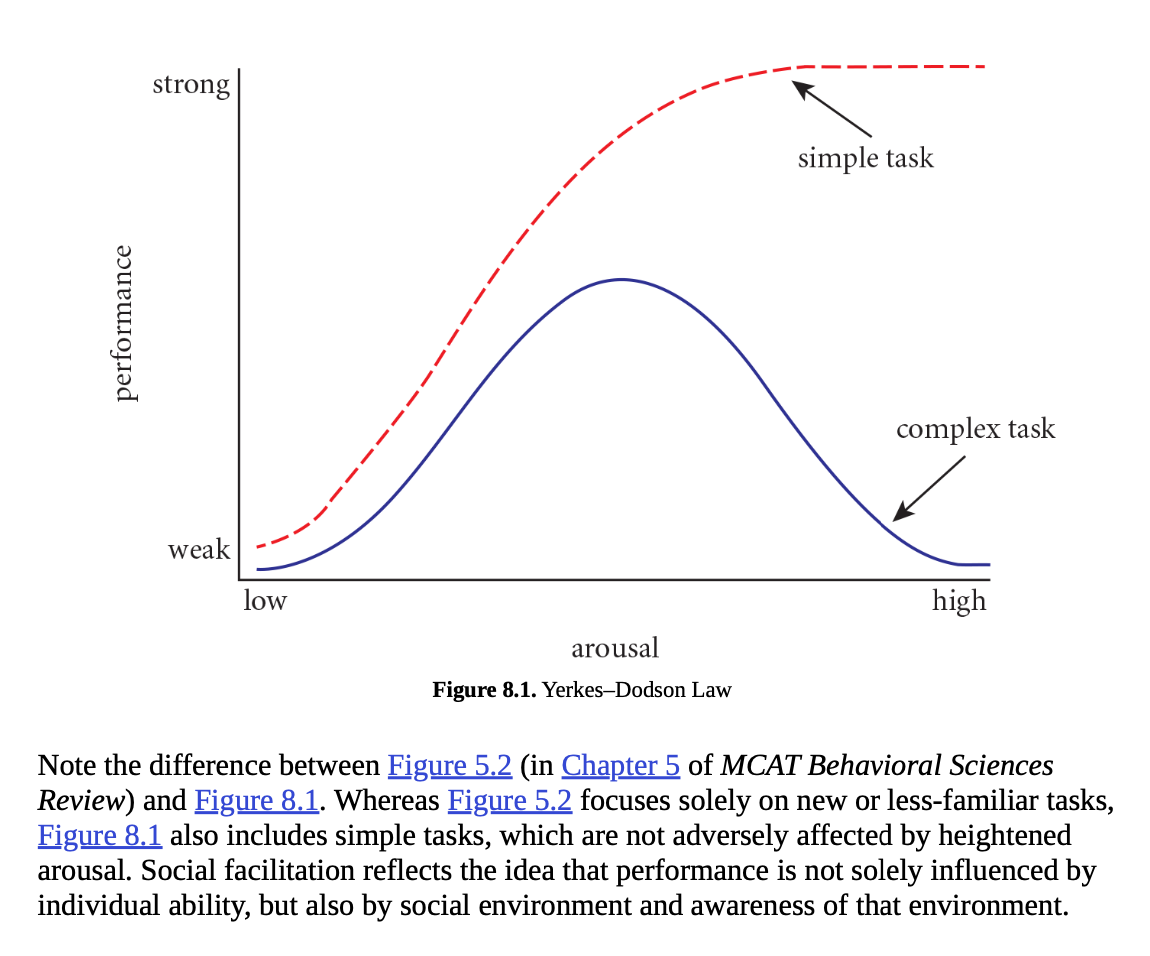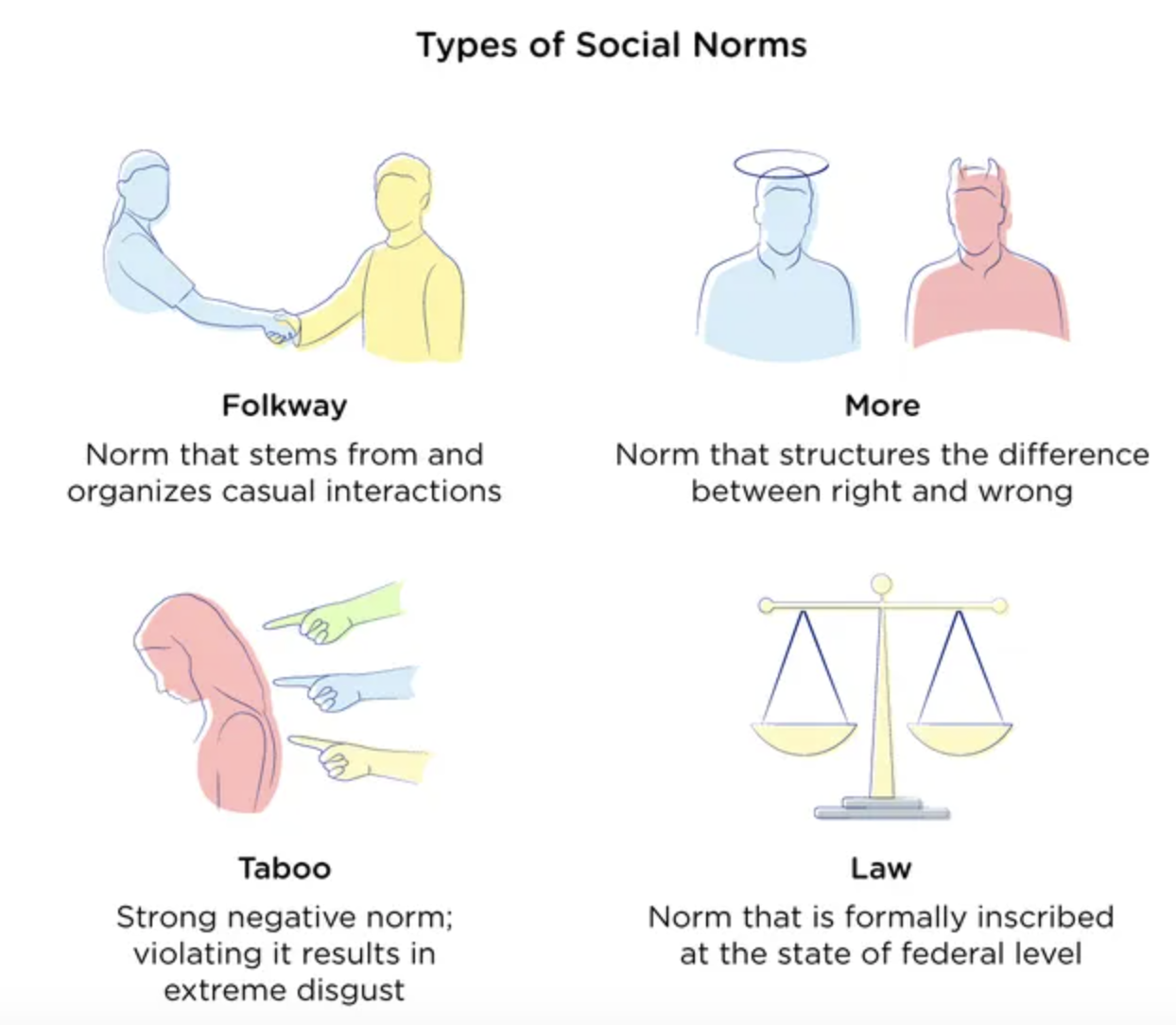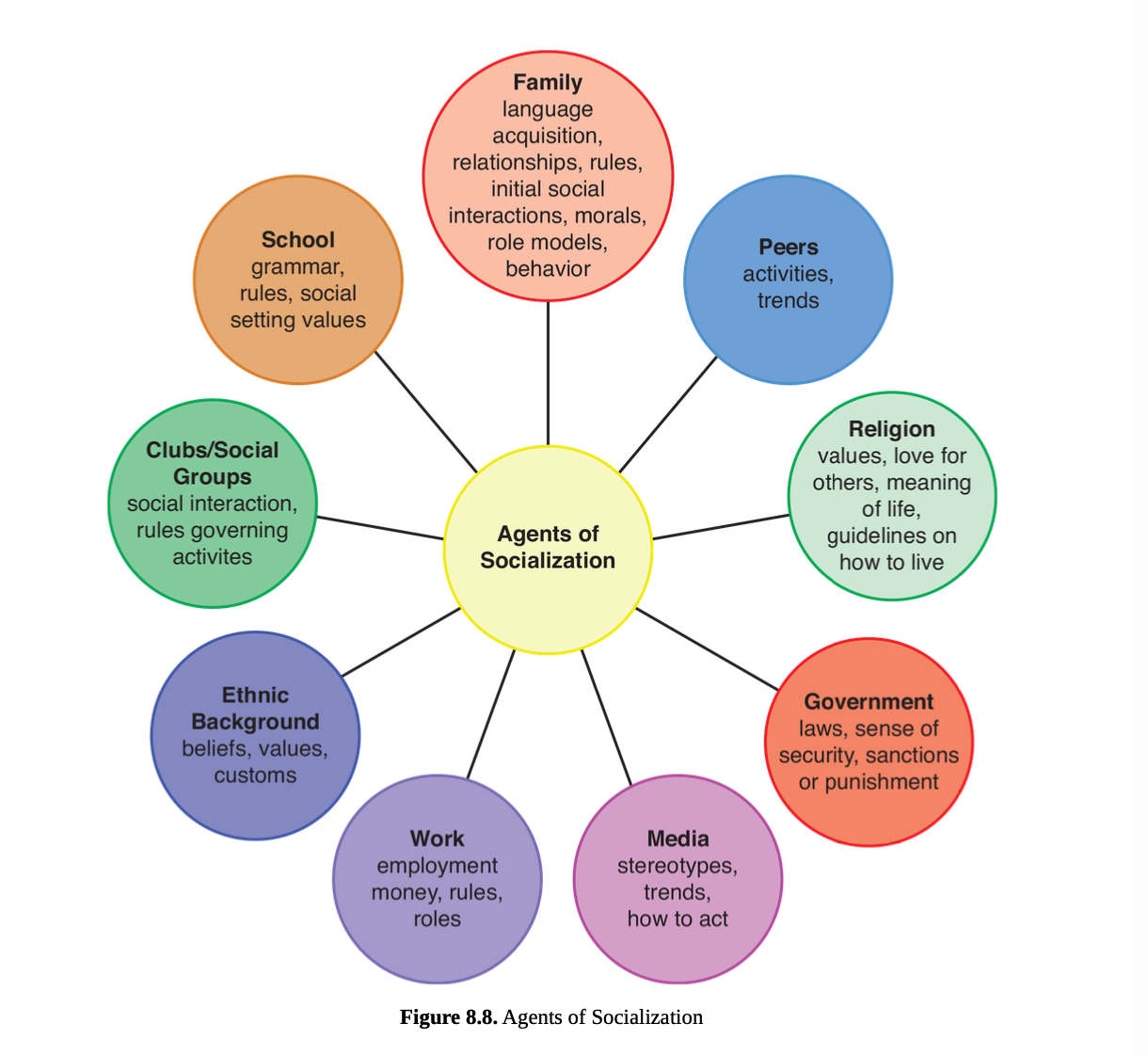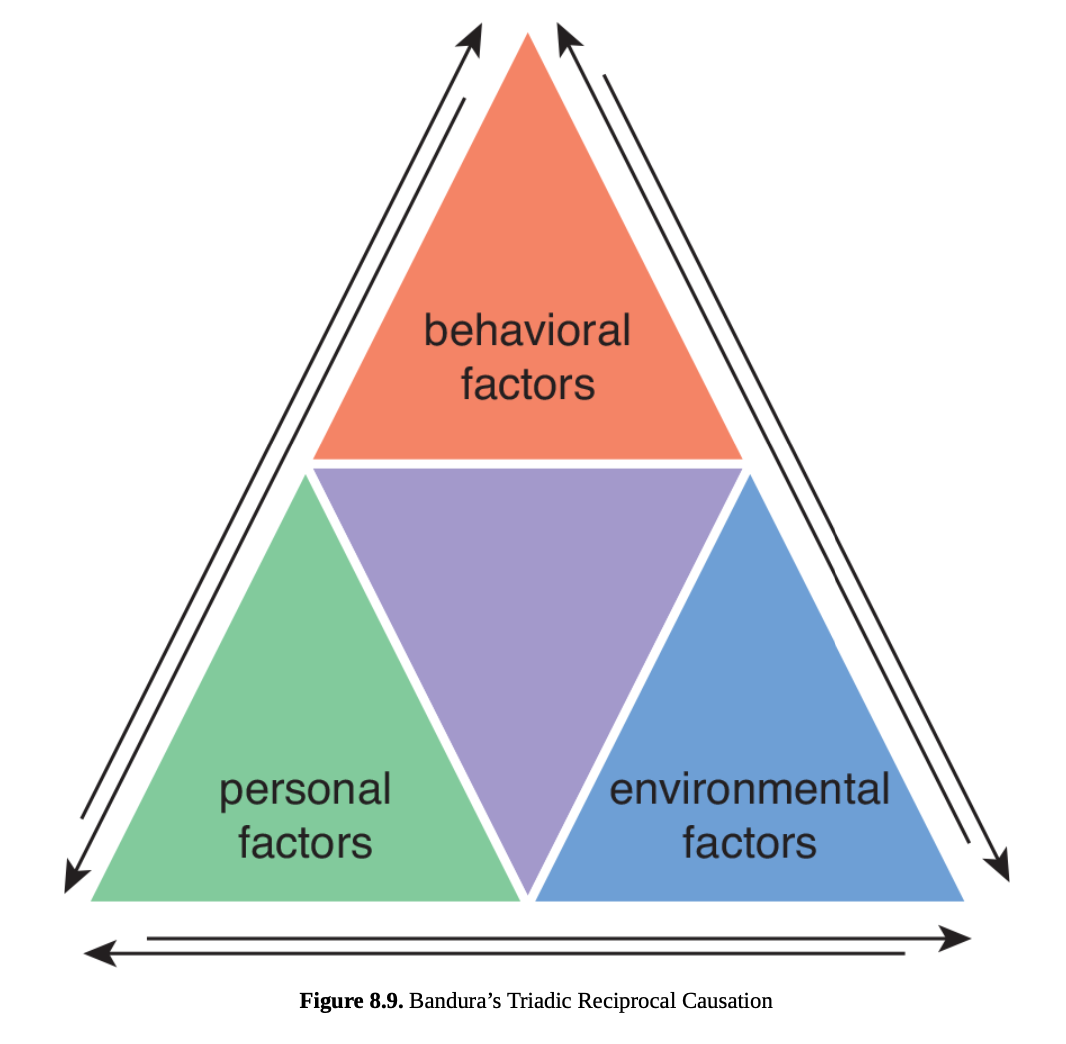PSY 1.8 Social attitudes and behaviours
1/82
There's no tags or description
Looks like no tags are added yet.
Name | Mastery | Learn | Test | Matching | Spaced |
|---|
No study sessions yet.
83 Terms
Michangelo phenomenon
concept of self is made up of both the intrapersonal self, the ideas that individuals have regarding their own abilities, traits, and beliefs, and the interpersonal self, the manner in which others influence creation of the ideal self
social action
which he defined as actions and behaviors that individuals are performing or modulating because others are around.
humans will behave in different ways based on their social environment and how their behavior will affect those around them.
to be contrasted against social interaction
social interaction
explores the ways in which two or more individuals can both shape each other’s behavior.

social facilitation
yerkes dodson law (also used to describe the relationship between stress or sympathetic arousal and performance,if there’s too much pressure, performance drops.)
a social psychology phenomenon where the presence of others enhances an individual's performance on a task, especially when it's simple or well-learned, but can also hinder performance on complex tasks
deindividuation
is a loss of self-awareness in large groups, which can lead to drastic changes in behavior.
leads to anti-normative behaviour that is, behavior not socially acceptable in most social circumstances eg riots and violence
bystander effect
describes the observation that when in a group, individuals are less likely to respond to a person in need.
degree of emergency or the perceived danger
degree of responsibility felt by the bystanders
cohesiveness of the group
social loafing
the tendency of individuals to reduce effort when in a group setting.
peers
individuals who are regarded as equals within a social group
peer pressure
refers to the social influence placed on individuals by others they consider equals.
Group decision making may differ from individual decision making.
may lead to risky behaviour eg binge eating, reckless driving, and violent activities.
identity shift effect
Changes in beliefs or behavior due to peer pressure
When an individual’s state of harmony is disrupted by a threat of social rejection,he individual will often conform to the norms of the group. Upon doing so, however, the individual will begin to experience internal conflict because the behavior is outside the normal character of the individual. To eliminate the sense of internal conflict, individuals experience an identify shift wherein they adopt the standards of the group as their own. The identity shift effect also highlights a larger theme in psychology: cognitive dissonance
cognitive dissonance
the simultaneous presence of two opposing thoughts or opinions.
an internal state of discomfort, which may manifest as anxiety, fear, anger, or confusion
group polarization
is the tendency toward making decisions in a group that are more extreme than the thoughts of the individual group members.
can lead to risky shift and choice shift
risky shift
noted that groups tended to make riskier decisions than individuals.
choice shift
shift toward caution
groupthink
is the tendency for groups to make decisions based on ideas and solutions that arise within the group without considering outside ideas. Ethics may be disturbed as pressure is created to conform and remain loyal to the group.
8 factors indicative of groupthink
Illusion of invulnerability
Collective rationalization
Illusion of morality
Excessive stereotyping
Pressure for conformity
Self-censorship
Illusion of unanimity
Mindguards
Illusion of invulnerability
Members encourage risks, ignore possible pitfalls and are too optimistic.
Collective rationalization
Members ignore expressed concerns about group approved ideas.
Illusion of morality:
Members believe ideas produced by the group are morally correct, disregarding evidence to the contrary.
Excessive stereotyping
Members construct stereotypes of those expressing outside opinions.
Pressure for conformity
Members feel pressured not to express opinions that disagree with the group, and view opposition as disloyal.
self censorship
Members withhold ideas and opinions that disagree with the group.
illusion of unanimity
Members believe the decisions and judgments of the group to be without disagreement, even if it does exist.
mindguards
Some members may decide to take on a role protecting the group against opposing views.
fad
behavior that is transiently viewed as popular and desirable by a large community.
Fads can include owning certain objects (such as pet rocks in the 1970s, Rubik’s cubes in the 1980s, and pogs in the 1990s) or engaging in certain behaviors (using catchphrases, altering clothing in some way, or engaging in particular types of media such as viral videos)
mass hysteria
shared, intense concern about the threats to society.
features of groupthink—collective rationalization, illusion of morality, excessive stereotyping, and pressure for conformity, in particular—lead to a shared delusion that is augmented by distrust, rumors, propaganda, and fear mongering.
culture
describes the beliefs, ideas, behaviors, actions, and characteristics of a group or society of people.
culture shock
traveling outside of one’s own society, these cultural differences can seem quite dramatic
assimilation
melting pot
is the process by which a group or individual’s culture begins to melt into another culture.
integrates new aspects of a society and culture with old ones, transforming the culture itself.
typically not an even blend. One group will generally have more power and influence than the other
ethnic enclaves
locations (usually neighborhoods) with a high concentration of one specific ethnicity
multiculturalism
cultural mosaic
refers to the encouragement of multiple cultures within a community to enhance diversity.
subcultures
refer to a group of people within a culture that distinguish themselves from the primary culture to which they belong.

counterculture
the subculture group gravitates toward an identity that is at odds with the majority culture and deliberately opposes the prevailing social mores.
socialisation
is the process of developing and spreading norms, customs, and beliefs.
categorised into
primary socialisation
secondary socialisation
cultural transmission
Beliefs, customs, and cultural norms are often passed down from one generation to another in a society
cultural diffusion
Spread of norms, customs, and beliefs from one culture to another can also occur
primary socialisation
occurs during childhood when we initially learn acceptable actions and attitudes in our society, primarily through observation of our caregivers and other adults in close proximity
secondary socialisation
process of learning appropriate behavior within smaller sections of the larger society. This type of socialization occurs outside of the home and is based on learning the rules of specific social environments.
associated with adolescents and adults and includes smaller changes and refinements to behavior that were established in primary socialization.
anticipatory socialisation
by which a person prepares for future changes in occupations, living situations, or relationships.
resocialisation
is another process by which one discards old behaviors in favor of new ones, typically through intensive retraining, and can have positive or negative connotations.
norms
are what determine the boundaries of acceptable behavior within society.
While norms are not laws, they do provide a mechanism for regulating the behavior of individuals and groups and thereby serve as a means of social control.
mores
are widely observed social norms.
sanctions
Penalties for misconduct or rewards for appropriate behavior
include formal and informal sanctions
formal sanctions
are enforced by formal social institutions like governments or employers and can include receiving a promotion (positive) or a jail sentence (negative)
informal sanctions
enforced by social groups.
Informal sanctions might include being allowed to sit at a particular table in the school cafeteria (positive) or exclusion from a social group (negative).
taboo
socially unacceptable, disgusting, or reprehensible.
folkways
are norms that refer to behavior that is considered polite in particular social interactions, such as shaking hands after a sports match

agents of socialisation
include family, peers, school, religious affiliation, and other groups that promote socialization.
include the environment as well
popular culture
common trends and beliefs prevalent at a given point in time, is heavily influenced by the media.
stigma
is the extreme disapproval or dislike of a person or group based on perceived differences from the rest of society.
deviance
refers to any violation of norms, rules, or expectations within a society.
any act that goes against societal norms
labelling theory
posits that the labels given to a person affect not only how others respond to that person, but also affect that person’s self-image. Labels can lead to channeling of behavior into deviance or conformity.
role engulfment
Internalizing a label and assuming the role implied by the label may lead to the assumed role taking over a person’s identity
differential association theory
deviance, particularly criminal behavior, can be learned through interactions with others
intimate exposure to others who engage in deviant behavior lays the groundwork for people to engage in deviant behavior themselves.
strain theory
attempts to explain deviance as a natural reaction to the disconnect between social goals and social structure.
conformity
is changing beliefs or behaviors in order to fit into a group or society.
normative conformity
desire to fit into a group because of fear of rejection
internalisation
involves changing one’s behavior to fit with a group while also privately agreeing with the ideas of the group
identification
outward acceptance of others’ ideas without personally taking on these ideas without internalising it
compliance
occurs when individuals change their behavior based on the requests of others. Methods of gaining compliance include the
foot-in-the-door technique
door-in-the-face technique
lowball technique
that’s-not-all technique
foot in the door technique
begins with a small request, and after gaining compliance, a larger request is made.
door in the face technique
large request is made at first and, if refused, a second, smaller request is made.
low ball technique
requestor will get an initial commitment from an individual, and then raise the cost of the commitment.
thats not all technique
an individual is made an offer, but before making a decision, is told the deal is even better than expected.
We can offer you these earrings for the stunningly low price of $19.99. But wait! If you buy them, you’ll also receive our matching necklace, normal retail value $49.99, absolutely free
obedience
experiment by Stanley Milgram
is a change in behavior based on a command from someone seen as an authority figure.
attitudes
are tendencies toward expression of positive or negative feelings or evaluations of something.
affective
behavioural
cognitive components
affective
refers to the way a person feels toward something, and is the emotional component of attitude.
eg i have a fear of snakes
behavioural
way a person acts with respect to something
For example, avoiding snakes
cognitive
the way an individual thinks about something, which is usually the justification for the other two components. In the snake example above, knowing that snakes can be dangerous (and sometimes venomous) provides a reason to be afraid of snakes and to avoid them.
functional attitudes theory
states that attitudes serve 4 functions:
knowledge
ego expression
adaptability
ego defense.
knowledge function
attitudes help provide organization to thoughts and experiences, and knowing the attitudes of others helps to predict their behavior
ego expression
allowing us to communicate and solidify our self-identity.
adaptive attitude
is the idea that expressed socially acceptable attitudes will lead to acceptance
ego defenses
if they protect our self-esteem or justify actions that we know are wrong
learning theory
states that attitudes are developed through forms of learning:
direct contact
direct interaction
direct instruction
conditioning.
elaboration likelihood model
theory of attitude formation and attitude change that separates individuals on a continuum based on how they process persuasive information.
includes central route processing and peripheral route processing
central route processing
high elaboration
strong arguments and logical reasoning to convince an audience, focusing on the content and facts
scrutinizing and analyzing the content of persuasive information
peripheral route processing
low elaboration
focusing on superficial details of persuasive information, such as appearances, catchphrases and slogans, and credibility

social cognitive theory
emphasizes the dynamic interaction between individuals, their behavior, and their environment, with a focus on observational learning, modeling, and self-efficacy
albert bandura triadiac reciprocal causation
Reciprocal Determinism
posits that behavior, personal factors (like thoughts, emotions, and beliefs), and the environment all influence each other in a cyclical manner
Observational Learning
learn by observing the behaviors and outcomes of others, leading to the imitation and adoption of those behaviors.
modelling
We are more likely to imitate behaviors modeled by people we perceive as similar to ourselves or as having high status.
self efficacy
this refers to an individual's belief in their ability to successfully perform a specific task or achieve a particular outcome.
cognitive factors
The theory acknowledges the role of cognitive processes, such as attention, memory, and judgment, in learning and behavior.